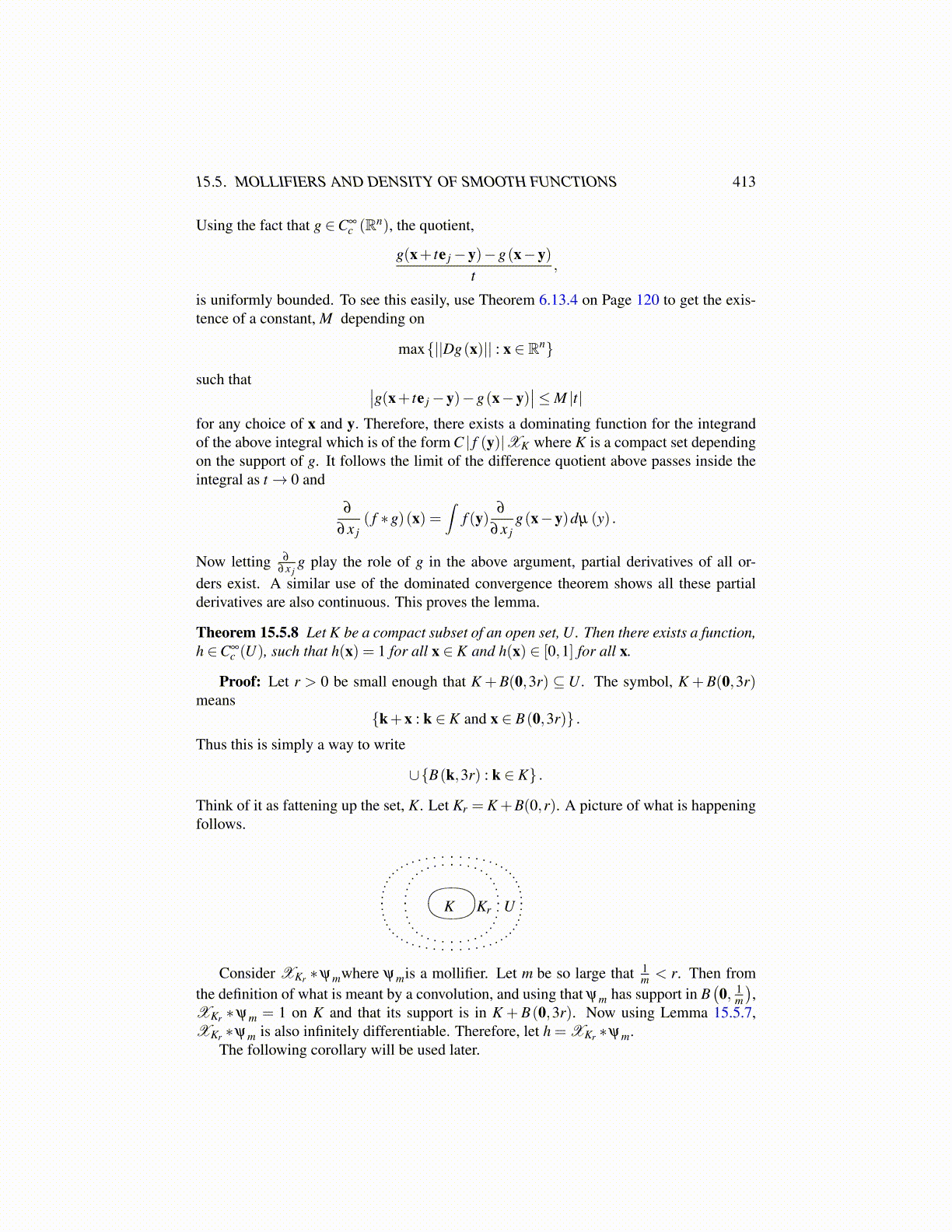
15.5. MOLLIFIERS AND DENSITY OF SMOOTH FUNCTIONS 413
Using the fact that g ∈C∞c (Rn), the quotient,
g(x+ te j−y)−g(x−y)t
,
is uniformly bounded. To see this easily, use Theorem 6.13.4 on Page 120 to get the exis-tence of a constant, M depending on
max{||Dg(x)|| : x ∈ Rn}
such that ∣∣g(x+ te j−y)−g(x−y)∣∣≤M |t|
for any choice of x and y. Therefore, there exists a dominating function for the integrandof the above integral which is of the form C | f (y)|XK where K is a compact set dependingon the support of g. It follows the limit of the difference quotient above passes inside theintegral as t→ 0 and
∂
∂x j( f ∗g)(x) =
∫f (y)
∂
∂x jg(x−y)dµ (y) .
Now letting ∂
∂x jg play the role of g in the above argument, partial derivatives of all or-
ders exist. A similar use of the dominated convergence theorem shows all these partialderivatives are also continuous. This proves the lemma.
Theorem 15.5.8 Let K be a compact subset of an open set, U. Then there exists a function,h ∈C∞
c (U), such that h(x) = 1 for all x ∈ K and h(x) ∈ [0,1] for all x.
Proof: Let r > 0 be small enough that K +B(0,3r) ⊆U. The symbol, K +B(0,3r)means
{k+x : k ∈ K and x ∈ B(0,3r)} .Thus this is simply a way to write
∪{B(k,3r) : k ∈ K} .
Think of it as fattening up the set, K. Let Kr = K +B(0,r). A picture of what is happeningfollows.
K Kr U
Consider XKr ∗ψmwhere ψmis a mollifier. Let m be so large that 1m < r. Then from
the definition of what is meant by a convolution, and using that ψm has support in B(0, 1
m
),
XKr ∗ψm = 1 on K and that its support is in K +B(0,3r). Now using Lemma 15.5.7,XKr ∗ψm is also infinitely differentiable. Therefore, let h = XKr ∗ψm.
The following corollary will be used later.